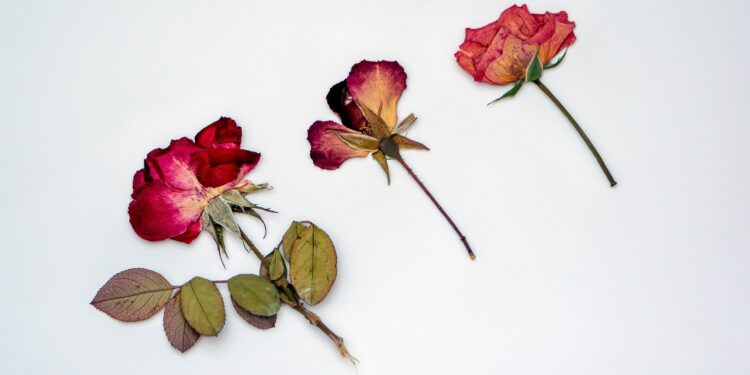Several years ago, I produced and hosted a garden show, called, The Serenity Garden on a local educational television station. I remember doing an episode with a woman in Lancaster who had an exquisite garden filled with numerous kinds of roses, hydrangea, annuals and perennials. On a small hill in the center of her estate, she had an elaborate gazebo where you could sit and enjoy the fragrance of her roses and admire the garden below. Behind her house she has a small shed where she dried and preserved her flowers to create magnificent wreaths and arrangements with her roses, hydrangea, and other dried flowers from her garden. She especially enjoyed using the tiny rose buds from her collections of miniature roses. Flowers of different varieties and colors hung drying from the overhead beams of her shed. Other flowers were drying in gels and drying powders. Her creations were amazing!
The most popular way of preserving flowers is air drying. They will do best in a dark, cool place with good air circulation. Strip away the extra leaves and cut the stems back no shorter than six inches. Hang the flowers upside down with dental floss or rubber bands as a single flower or in bouquets. It will take 3 to 4 weeks for them to fully dry. Some lightly spray unscented hairspray on them to help preserve them. Flowers like roses, hydrangea, baby’s breath, strawflowers, yarrow, and lavender do well with air drying.
Another popular way of preserving flowers is to use a desiccant such as a silica gel. I’ve used this method by drying flowers in a round metal cookie tin, often seen during the holidays. Pour about an inch of silica gel in the bottom of the tin. Carefully place the flowers on top of the gel and pour enough gel to completely cover the flowers. It usually takes 5 to 10 days to dry the flowers. After drying, carefully dust away any remaining gel on the petals. This method works well with cosmos, dahlia, camellia, roses, and zinnia.
Flowers like sedum that have a high moisture content don’t dry well. Here is a partial list of flowers that dry and look the best: Anise hyssop, Cornflowers (Bachelor Buttons), Globe Thistle, Lady’s Mantle, Larkspur, Marigolds, Sage, Love-in-the-mist, Poppies, and Statice are a few of the good candidates for drying and preserving!
Dried fall and winter displays are great for the holidays. Your very own personally made wreath of dried flowers on your front door would be the envy of the neighborhood!
Learn more about ways to dry flowers in a future podcast of, In the Garden with Rick found at Dimpletimes.com.


